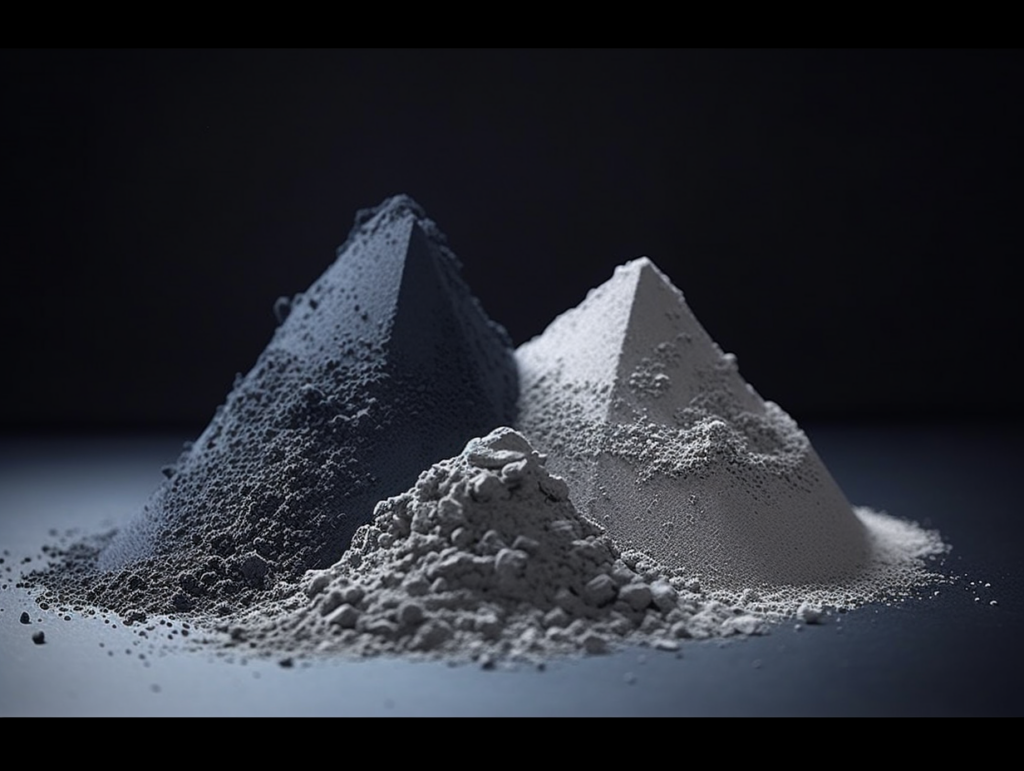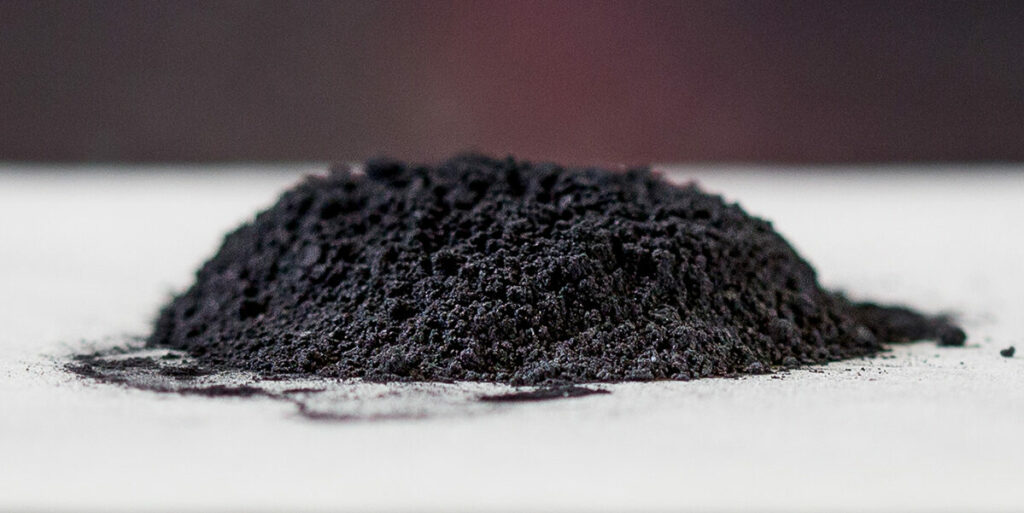Al 3203 powder, also known as alumina powder, is an inorganic compound with the chemical formula Al2O3. It is a fine white powder that is odorless and possesses strong ionic interatomic bonding giving rise to its desirable material characteristics. Alumina powder has a wide range of applications and is a versatile material used across many industries.
Some of the key details about Al 3203 powder are:
Types of Al 3203 Powder
| Type | Characteristics | Applications |
|---|---|---|
| Alpha alumina | Most stable form, high hardness and strength | Abrasives, cutters, armor, refractories |
| Gamma alumina | High surface area, catalytic activity | Catalysts, adsorbents |
| Beta alumina | High ionic conductivity | Batteries, fuel cells, membranes |
| Theta alumina | Resistance to creep deformation | Structural ceramics |
| Delta alumina | Lower density than alpha | Refractories, insulation |
Physical Properties
| Property | Details |
|---|---|
| Chemical formula | Al2O3 |
| Molecular weight | 101.96 g/mol |
| Density | 3.95 g/cm3 |
| Melting point | 2,072°C |
| Hardness | 9 Mohs |
| Refractive index | 1.768 |
| Solubility | Insoluble in water |
| Color | White |

Key Characteristics
- Chemically inert
- High hardness and abrasion resistance
- Refractory with high melting point
- Electrical insulator
- Thermal conductor
- Bioinert and biocompatible
- Can be polished to optical smoothness
- Can be sintered into complex shapes
Applications and Uses
Alumina powder has a diverse range of applications across industries:
| Application | Details |
|---|---|
| Abrasives | Used in sandpapers, grinding wheels, blasting media |
| Refractories | High melting point makes it suitable for linings of furnaces, kilns, incinerators |
| Ceramics | Used in spark plugs, wear parts, armor, cutting tools |
| Catalysts | Gamma alumina used as catalyst and catalyst support |
| Polishing | Produces glossy finish on metals, stones, glass |
| Fillers | Reinforces plastics, rubbers, papers, paints |
| Biomedical | Joint replacements, dental implants, prosthetics |
| Electronics | Substrates, insulators, packaging |
Specifications and Standards
Alumina powder is available in varying purities, particle sizes, surface areas and other parameters depending on the application:
| Parameter | Options |
|---|---|
| Purity | 99% to 99.99% |
| Particle size | Micrometer to nanometer scale |
| Surface area | 1 to 300 m2/g |
| Crystal structure | Alpha, gamma, theta, delta |
| Shape | Spherical, tabular, flakes |
| Density | Loose or tapped |
Alumina powder products must meet various quality standards such as ISO, DIN, JIS depending on the region and application. Military and aerospace applications require powders meeting specific qualification standards.
Suppliers and Pricing
Some major suppliers of alumina powder include:
| Supplier | Location | Price Range |
|---|---|---|
| Almatis | Global | $2 – $10 per kg |
| Alteo | Europe | $3 – $12 per kg |
| SHOWA DENKO | Japan | $4 – $15 per kg |
| Sumitomo Chemicals | Japan | $3 – $8 per kg |
| Nippon Light Metal | Japan | $2 – $7 per kg |
Prices vary based on purity, particle characteristics, supply-demand dynamics and bulk discounts. High purity 99.99% alumina can cost over $50 per kg.
Installation, Operation and Maintenance
- Alumina powder should be stored in dry, indoor storage away from moisture
- Care should be taken during handling to prevent accumulation of fine dust
- Workers should wear PPE like masks to prevent inhalation
- Equipment must be grounded during powder transfer to prevent static discharge
- Good housekeeping must be maintained to prevent powder accumulation
- Regular inspection of storage silos and containers for damage or leaks
- Periodic cleaning of powder handling system to remove residual buildup
Choosing Suppliers
Factors to consider when selecting an alumina powder supplier:
- Reputation and experience
- Quality certifications
- Production capacity and lead times
- Purity levels available
- Consistency in achieving particle size and morphology
- Prices relative to purity and quantities
- Capability to customize properties like surface area
- Reliability in meeting delivery schedules
- Quality assurance and control testing capabilities
- Compliance to safety and environmental regulations
- Location and logistics costs

Pros and Cons of Alumina Powder
| Pros | Cons |
|---|---|
| Inertness and chemical resistance | Brittle with low fracture toughness |
| High hardness and wear resistance | Low thermal shock resistance |
| High melting point | Poor thermal conductivity |
| Electrical insulation | Relatively high density |
| Thermal stability | Requires high sintering temperatures |
| Biocompatible | Reactivity with acids and alkalis at high temps |
Advantages Over Other Ceramic Powders
- More economical than zirconia, silicon carbide or boron carbide
- Higher hardness than limestone, silica or titania
- Better high temperature properties than silica or graphite
- Lower thermal expansion than cordierite or mullite
- More resistant to chemical attack than limestone or magnesium oxide
- Better electrical insulation than titania or zinc oxide
- More biocompatible than zirconia or graphite
However, alumina has lower fracture toughness than zirconia, lower corrosion resistance than silica, and lower thermal conductivity than boron nitride. The advantages depend on the specific application and requirements.
Limitations of Alumina Powder
- Relatively brittle with tendency for cracks under tension
- Prone to thermal shock failure compared to graded ceramics
- Lower thermal conductivity than metals or graphite
- Requires high purity levels for transparency or electrical insulation
- High sintering temperatures needed to fully densify the material
- Static charge buildup can cause handling issues in powder form
- Not suitable for low temperature or highly reducing environments
- Dissolves in strong alkali solutions at high temperatures
- Ceramic parts have lower toughness than metals

FAQs
What is alumina powder used for?
Alumina powder has a very wide range of uses including abrasives, refractories, technical ceramics, polishing compounds, catalysts, electronic substrates, high temperature insulation, and biomedical implants among others. Different alumina powder types are used based on the specific application requirements.
Is alumina hazardous?
Alumina is generally considered non-toxic and poses little health hazard. However, breathing fine alumina dust over prolonged periods can cause irritation and lung conditions. Handling precautions are recommended to prevent inhalation or skin/eye contact with the fine powder. Appropriate PPE should be used.
What is the difference between alpha, gamma and delta alumina?
Alpha alumina is the most stable crystalline form with a hexagonal structure. It has high hardness and strength. Gamma alumina has a cubic structure with high surface area and finds use as catalysts and adsorbents. Delta alumina has a different tetragonal structure and lower density than alpha alumina.
How is alumina powder made?
Alumina powder is produced from bauxite ore through the Bayer process involving steps like digestion, clarification, precipitation, calcination and milling. The powder characteristics depend on the processing conditions and temperatures which determine the final crystal structure.
What is the particle size range of alumina powder?
Alumina powder particle size can range from under 1 micron to over 100 microns. Ultrafine alumina of under 100 nm particle size is also produced as nanoscale powder. Different applications require different particle size distributions and average sizes.
What determines the price of alumina powder?
Purity, particle size and surface area, supply-demand dynamics, raw material costs, production costs, R&D investments and shipping costs are major factors affecting alumina powder pricing. High purity 99.99% alumina powder costs significantly more than lower purity grades.
Is alumina environmentally friendly?
Alumina is considered an environmentally safe material. It is non-toxic, recyclable and does not produce hazardous by-products. However, efforts should be made to minimize alumina dust emissions and waste generation during manufacturing and handling.
What is the difference between aluminium and alumina?
Aluminium is a metal whereas alumina is a ceramic material composed of aluminium and oxygen with the chemical formula Al2O3. Aluminium has a silvery appearance whereas alumina is a white powder.
Does alumina occur naturally?
Alumina occurs naturally as the mineral corundum. Ruby and sapphire are gemstone variants of corundum. Emery is a natural mix of corundum and magnetite used as an abrasive. However, commercial alumina powder is synthetically produced.
In summary, alumina powder is a versatile ceramic material with a diverse range of uses across many industries and applications. It provides properties like high temperature stability, hardness, wear resistance, electrical insulation and bioinertness that lend themselves useful for a variety of products and processes. However, factors like brittleness, chemical purity and microstructure must be carefully considered when selecting an appropriate alumina powder type for the intended application.





